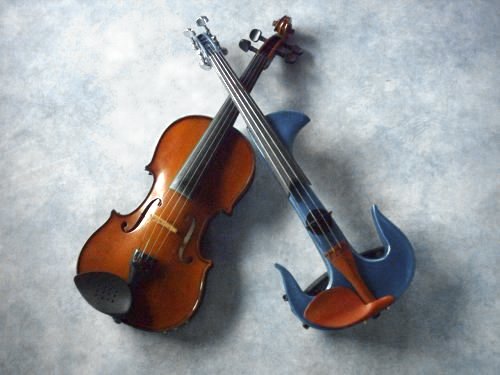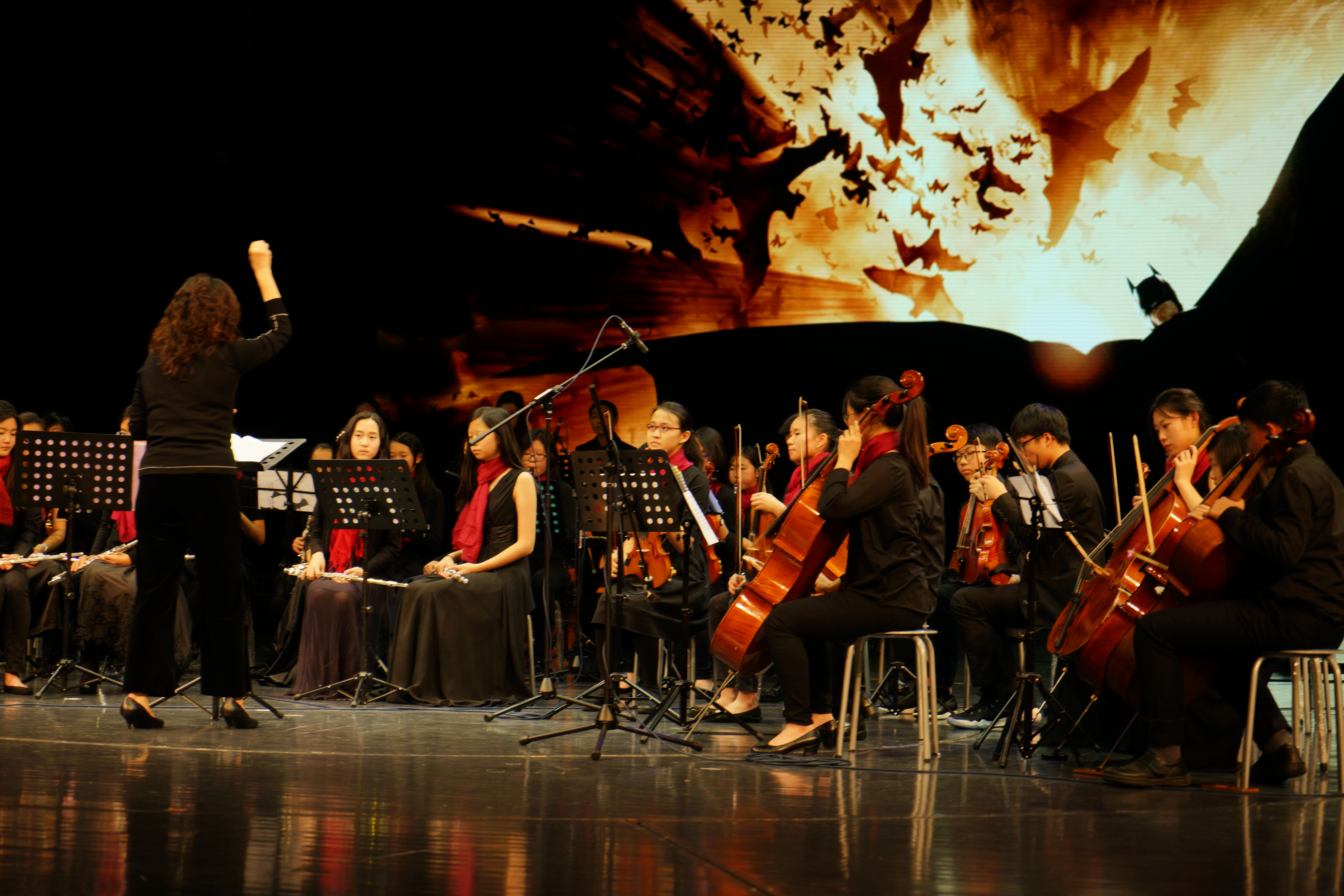The future of Classical music
When I started out, it was just a hobby, something I did for fun. Now my violin defines me. When I draw out long tones with my arm and tap my feet on the floor, I feel alive. I feel so much more awake than when I’m lazing in front of a computer screen. I forget momentarily the pain I feel—in my brain, my aching teeth, and my bleeding heart. Music is the firm rope that ties me to sanity.
The music one listens to and enjoys contributes to their identity. Music in all its forms touches human beings in a primal way. It feeds the rowdy beast hiding behind the civilized mask that society demands we wear. However, in the age of dancing K-Pop stars and powerful rap beats, the classical music industry is struggling to maintain an audience. The question is, have human beings devolved to the point where they can no longer enjoy and be moved by classical music? What exactly is the future of this increasingly archaic art form, and how can it survive moving into the twenty-first century? Classical music as a timeless genre will be able to resonate with future generations if it evolves to satisfy the values of contemporary citizens.
When most people think of classical music concerts, they may think of crowds of stiff, white men in tuxedos, pinching champagne glasses as they waddle around. They may think of grand halls with glowing chandeliers that leaves no place for the dirt and imperfection of ordinary beings. Research shows that “the perceived formality of the concert hall [is] a significant obstacle to audience diversity” and expansion (Pitts 229). In addition, an article from the Huffington Post shows that the applause etiquette of classical music concerts may be intimidating to first-timers, causing them to “tremb[le] in fear that this might be the wrong time to applaud” (Kavner). However, art is forever evolving to reflect contemporary social values, and classical music should not be an exception. In the Philadelphia Orchestra’s rebound from bankruptcy, it has started programs to change the concert hall experience. While the traditional, respectful, and silent concerts can continue to exist, new performances allow audiences to applaud whenever the orchestra plays a dazzling passage. People can enter the concert hall in casual attire and receive friendly information from the conductor during intervals, breaking the foreboding silent rituals of the past (Kavner). These changes allow people to feel more welcome when attending classical music concerts without the pressure to learn and follow antiquated rules. While critics of these changes do exist, the fact is that throughout history, classical music audiences were not always so polite (Kavner).

When Igor Stravinsky’s Rite of Spring first erupted onto the stage in Paris on 29 May 1913, many people screamed and caused an actual riot, protesting against such strange, innovative new music. As the dancers thumped on stage, portraying a pagan spring ritual in a Russian village, people were outraged. Conflicting accounts of what happened suggest that the audience started the furor minutes into the performance and did not stop even during the ending ovation (Hewett). Perhaps musicians in the orchestra pit were dodging flying food or secretly amused at the reaction, as they waited for directions from the conductor. Fast forward to today, one can observe enthusiastic crowds screaming as a pop star appears out of artificial mist, clad in measly strips of clothing, or fans sticking their tongues out, stamping the floor at a rock concert. Classical music can regain this infectious energy, which was present at the premieres of the old masterpieces. The problem is not only to keep creating new, innovative compositions, but also to make the environment more audience-friendly, so people can walk into a concert hall comfortably and feel that they belong. In the internet age of interconnections and individual voices, classical music concerts can become more accessible and represent the growing middle class. Moving into the future, the image of expensive seats and elitism can be eradicated from classical music through programs to diversify concert experiences. With these changes, the original music will still remain, only with greater appeal to the public.
Classical music expresses emotions in creative, timeless ways that every human being on Earth can relate to. Listening to music is as much about opening one’s ears as it is about feeling and being swayed by the melodies and voices of the past.
“Classical music is for everyone!”
The esteemed conductor Benjamin Zander shouted this message to his TED audience in 2008 (Zander). A proficient pianist with delicate hands, he started his speech by drumming out the chords of Chopin’s “Suffocation.” When he finished, time seemed to stop in a moment of solemn silence before the explosion of applause. Zander’s short performance proved that it is possible for a whole crowd of busy people to stop, listen, and try to understand a piece by Chopin, using it as a launching point to remember someone they had lost. Chopin composed his prelude in 1849, but contemporary audiences can still connect with its essence—the feeling of losing someone and trying to overcome that pain, the pain that pounds in your heart, the pain that life splashes in your face, that you have to deal with alone. Only, no one has to deal with these fundamental human experiences alone, because generations before, classical musicians grieved, too. Listening to classical music bridges the centuries; the solemn composers pictured on album covers become closer, almost feeling like peers. Classical music can connect generations of artists and wandering souls.

While classical music ensembles can seem intimidating, they function just like normal human interactions. For example, chamber music is about teamwork. Imagine this: four musicians are sitting in a semicircle—two violinists, one cellist, one violist. The first violinist nods a clear starting beat and the rest launch in after him. A babble of voices, sometimes together, sometimes a mix of individual melodies. No backup dancers, but only these four musicians, moving the music along. The lead musician has the task of keeping the rest of the ensemble intact, and he gets so excited he leaps from his seat while playing certain sections. The ensemble moves as one, their bows moving like waves on a stormy sea, crashing left and right. They make eye contact, stare, make faces, and laugh at private jokes while performing, because they exist in a private world that the audience can only hope to understand. Orchestras behave just like people conversing and debating in everyday life. The principles are similar, which is one reason why this genre has survived across the centuries.
To be sure, the road to making classical music more accessible is a task with its challenges. A study from Princeton University shows that people who have pursued higher education make up a large percentage of audiences in classical music concerts (“Who Attends … Concerts.”). It is no wonder many see classical music as the “stuff white people like” (Crappell 8) or an artform reserved for the elite. In under-resourced regions where children are fighting just to obtain a primary or secondary education, how can classical music education play a role?
José Antonio Abreu, the founder of El Sistema in Venezuela argues that there is value in teaching impoverished children music. His social program seeks “to bring Venezuela’s disadvantaged youth off the streets and into musical ensembles to enrich their lives and promote social mobility” (Ellis-Petersen). Besides keeping children away from the danger of gang violence and drugs, teaching children music gives them the chance to be part of a warm community where they can belong and forge meaning in their lives. Admittedly, such a program is still a work in progress, and an article from the Guardian criticizes El Sistema for being a “Model of Tyranny,” claiming that the organization does not reach the most impoverished of children (Baker). Instead, most of the participants are from the middle class. However, the 2010 book Venezuela: The Miracle of Music by Chefi Borzacchini “showed that among 180 families from 15 nucleos [or community music schools] in Caracas, Bolivar, Lara, Merida, Miranda, Tachira, Sucre and Zulia, 11% were middle class, 36% came from poverty and 53% came from extreme poverty” (Ellis-Petersen). Reynaldo Trombetta, a Venezuelan musician defending El Sistema, states that there is a need for better documentation of the social changes initiated by the program. That does not mean such changes do not exist. El Sistema founder José Antonio Abreu claims that thanks to his project, “art is ‘no longer a monopoly of elites’ but rather ‘a right for all the people’” (Ellis-Petersen).
By adapting the atmosphere of classical music concerts to entice a greater audience, classical music can remove its image of elitism. Programs like El Sistema can bring the renewing experience of making music to the masses, so that it can benefit more people. In addition, in the age of the internet, the world can become more of a democracy, in that the opportunities to learn are more evenly distributed across the population. It is easier now to buy an instrument and self-educate. It is easier now, to ask for advice from professional musicians online. Average people, connected by music, can learn from and feed off each other’s energy and expertise. Perhaps classical music has the power to unite people around the world, to share in a moment of peace, enjoying the art of the past, present, and future.
Look into the deepest, most human part of you. Who are you? What is your identity? Why do you exist? Perhaps you exist because you love life. Perhaps you want to lift people up from depression. Perhaps you are chasing some wisp of perfection that you may never reach. Classical music conveys the oldest of human emotions. Its message may not be as clear as trendy pop songs, and it may contain passages in Latin, but just close your eyes and feel the melodies swell in your ears. Like reading, the music will take you back in time, to a different world.
Featured Image – MHS Chamber stages an orchestra performance at Art for Charity concert (Yiyun, center) Courtesy of Benson Lin


As a fellow aficionado of Classical music, I applaud this piece, Yiyun! This was beautifully written and I enjoyed the many engaging anecdotes about the success of Classical music in our contemporary context. Enough with bizarrely twerking buffoons; give us more divinely inspired bassoons!
Thank you for all the support Mr. Costello! For your insightful edits and shared enthusiasm for classical music!